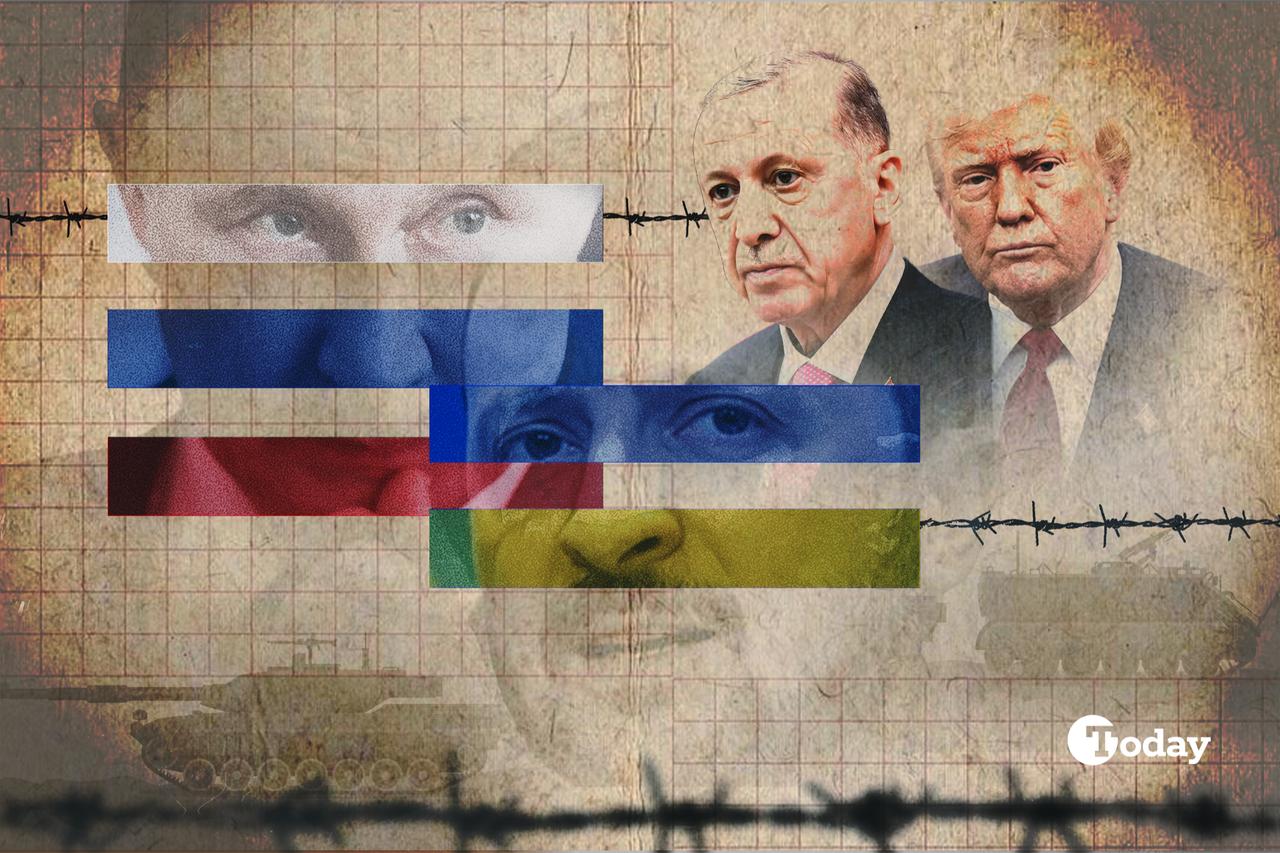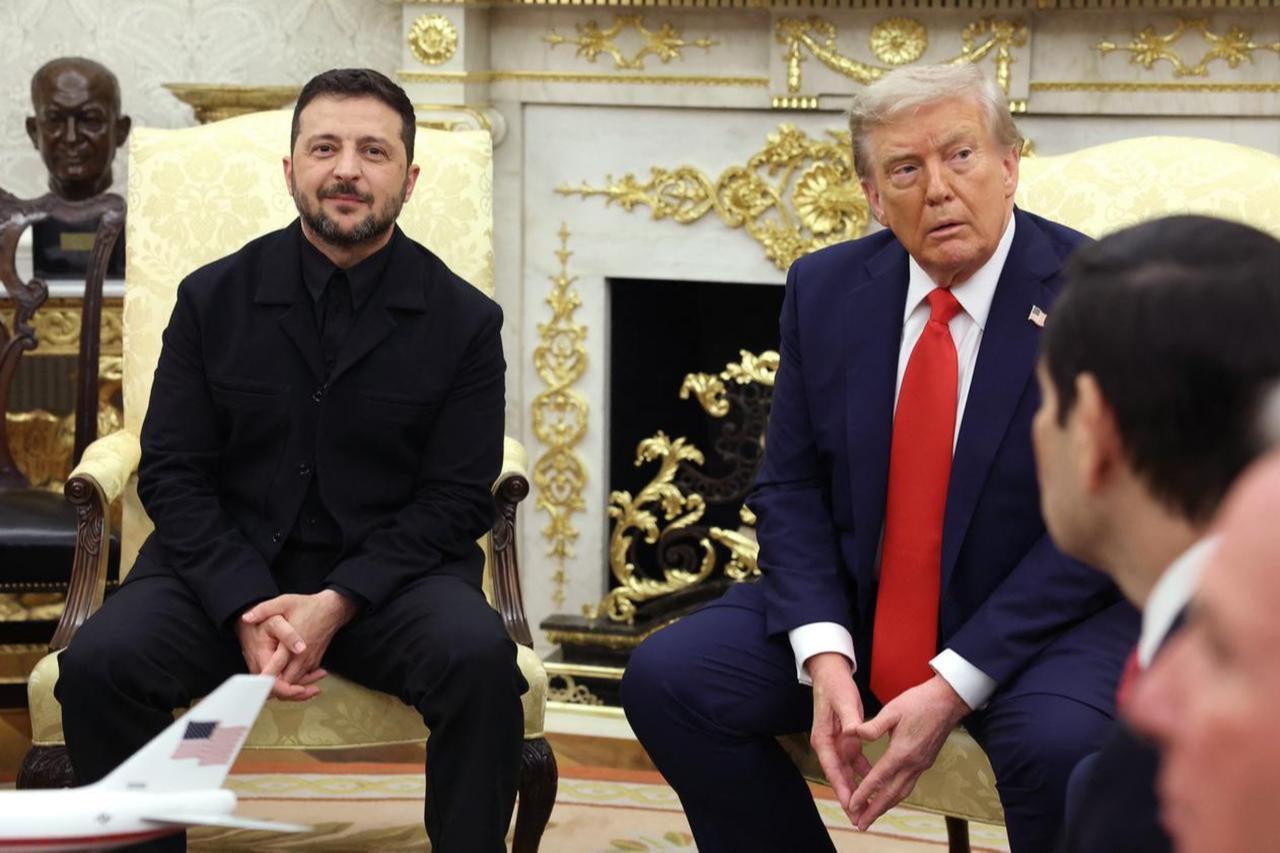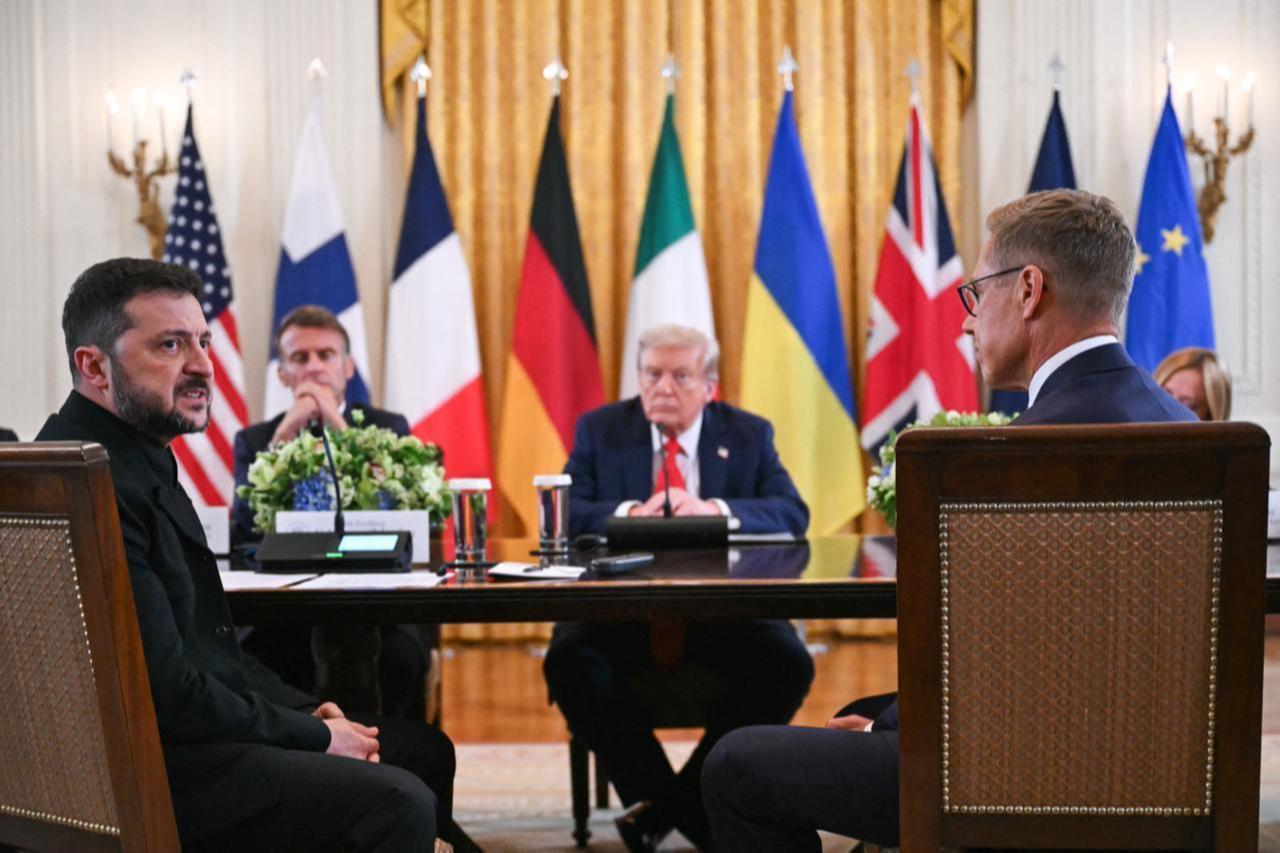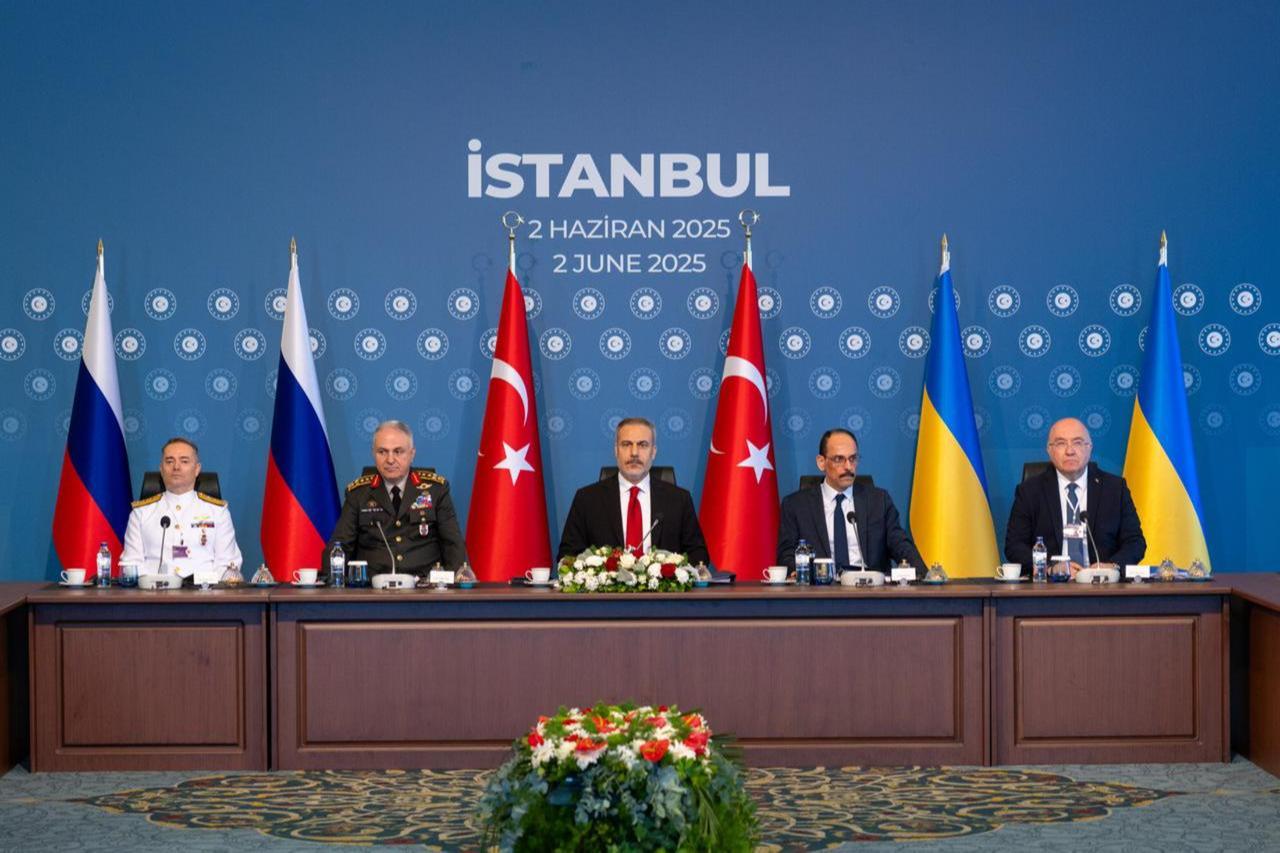
Just as in 1916, when the will of the people was ignored and the map of the Middle East was drawn by Britain and France through the secret Sykes–Picot Agreement, the consequences of which we still experience today, now, in the 21st century, the United States, in pursuit of quick political and material gains, feels entitled to hand over the territory of a sovereign state to another state at the negotiating table, disregarding international law. Europe merely reviews this unacceptable agreement and proposes minor adjustments.
Now, everything is happening openly before our eyes: in the media, we see how the land and people of one state are being offered to another. Moreover, the United States, the founder of the international rules-based order and the creator of collective security under NATO, wants to be “paid” in return for protecting Europe.
So then, if an aggressive state is rewarded in this way, what will stop it from attacking the sovereignty of other countries in Europe tomorrow?
Since the start of Russia’s full-scale invasion of Ukraine, three ceasefire or peace agreement texts have come before us. The first was the text and modification requests leaked to the press in 2024, which emerged from the failed Istanbul Agreement talks in March 2022, shortly after the war began.
The second is the 28-point peace plan that recently took shape following talks between the Trump administration and Russia, most concretely during the Trump–Putin meeting in Alaska in August. Finally, the Europeans reviewed the Trump plan and put forward their own counter-proposal last week.
Over the weekend, U.S. and Ukrainian representatives met in Geneva. After comments from Russia that the European plan “constructively doesn’t fit us at all” and that Trump’s original plan was more “acceptable,” the U.S. special envoy Steve Witkoff is expected to go to Moscow next week.
Looking at developments on the ground, the territory Russia occupies in Ukraine (including Crimea and Donbas, seized before 2014) has fluctuated at roughly the same levels since November 2022, and since August 2025, the reported occupied territory has been around 114,500 square kilometers, equal to about 19% of Ukraine’s land. Russia made its biggest gain since March 2022 in Donetsk oblast in November 2024. However, Russian advances in recent years have mostly occurred in sparsely populated rural areas.
While Russia made small gains in 2024 and 2025, the war has essentially turned into a battle of attrition for both sides since Russia announced the annexation of Donetsk, Luhansk, Zaporizhzhia, and Kherson oblasts in September 2022. Despite Russia’s slow and costly advance, Ukraine still controls the vast majority of its territory, and it is clear that Russia has not been able to rapidly shift the situation on the ground in its favor for the last three years.

So how do conditions on the ground reflect in ceasefire and peace plans, and what do the various peace plans demand? In February and March, statements from U.S. envoy Steve Witkoff and later from the Kremlin indicated that the U.S. and Russia could use the Istanbul Agreement Communique as a baseline. The Istanbul Agreement, which would equate to Ukraine’s capitulation, is an important document in terms of showing what Russia is actually aiming for. While the Trump document is a detailed guiding document, the Istanbul agreement and the changes Russia requested are significant for showing what kind of "peace" Russia is pursuing.
I will compare how major issues are addressed across the three documents, though we should remember that none of them are fully official, and our comparison is based on leaked reports released to the media.
The Istanbul communique did not resolve territorial disputes related to Crimea, Sevastopol, and parts of eastern Ukraine; it envisioned resolving these issues through negotiations over the next 10–15 years. It effectively turned these regions into a frozen conflict and prevented them from being recognized as Russian territory. At that time, Donetsk, Luhansk, Zaporizhzhia, and Kherson oblasts had not yet been annexed by Russia.
The U.S. plan envisioned Crimea, Luhansk, and Donetsk being recognized, including by the U.S, as de facto Russian territories. Under this proposal, Russia, which occupies 46,570 square kilometers or 88% of the Donbas regions (Luhansk and Donetsk), would also be granted the additional three-quarters of Donetsk oblast that it does not currently occupy. This would be “rewarding the aggressor.”
Kherson and Zaporizhzhia would also receive a de facto recognition as Russian along the line of contact.
The European plan states that Ukraine would not attempt to retake territories occupied by Russia through military means and, by saying “negotiations on territorial swaps will start from the Line of Contact,” postpones resolution to a later date, as in the Istanbul Agreement. However, it “rejects forced territorial concessions” and emphasizes that “Ukraine’s sovereignty must be reaffirmed”.

In the territories occupied by Russia, which the U.S. plan proposes to be recognized as Russian, countless human rights violations have taken place since the occupation. Following the migration of around 2.9 million after occupation, the total population of the areas occupied by Russia is estimated to be around 3.47 million people. This raises the question of how the safety of these people will be ensured.
Since the annexation of Crimea, Russia has committed numerous human rights violations, including crimes against humanity such as execution-style killings of Ukrainian men, women, and children. Beyond these crimes, Ukrainians in Russian-occupied territories have been deprived of basic human rights, as documented by reputable institutions such as the U.N. Human Rights Monitoring Mission in Ukraine, the European Court of Human Rights (ECHR), and Human Rights Watch.
Reports indicate that only 7% of school-aged children (around 44,000) in occupied areas are participating in Ukrainian online education. Other violations include: lack of fair trial and access to lawyers; prolonged detention; ill-treatment and torture in detention; forced displacement; loss of housing; ethnic and religious discrimination (especially against Crimean Tatars); intimidation and persecution of journalists and religious groups; looting and destruction of property; the organized removal and adoption of children to Russia and their subsequent adoption; forced acquisition of Russian citizenship; and suppression of Ukrainian language and identity, particularly in Crimea and parts of Donbas.
According to the Istanbul Agreement, Ukraine would receive multilateral security guarantees from guarantor states such as the U.K., China, Russia, the U.S., France, and Türkiye. Russia requested the addition of Belarus. While the agreement foresaw security guarantees being implemented if Ukraine were attacked, Russia pushed for a clause requiring approval from all guarantors, including itself, for any military intervention in response to aggression against Ukraine, effectively giving itself a veto power. This stalled the agreement talks, as such a mechanism would nullify all guarantees in case of a Russian attack, similar to a UNSC veto.
The U.S. plan ties a “reliable” American security guarantee to a form of “compensation.” Ukraine would lose this guarantee if it invaded Russia or targeted Moscow or St. Petersburg with missiles. If Russia attacked Ukraine, the plan envisioned a coordinated “military response,” and Russia would face the loss of conquered territory and be subject to sanctions. However, because this “military response” is neither binding nor strong, the European plan proposes “robust security guarantees”, “mirroring NATO’s Article 5”.

In the Istanbul talks, Russia proposed that Ukraine have no more than 85,000 troops, while Ukraine counter-proposed a cap of 250,000 troops. Unlike other plans, the Istanbul documents contained extremely detailed tables. Under the section “The maximum number of personnel, weapons and military equipment… in peacetime,” the Russian proposal allowed Ukraine to have 96 multiple launch rocket systems (MLRS) with a 40-kilometer range, while Ukraine counter-proposed 600 MLRS with a 250-kilometer range.
In the Trump plan, Ukraine would have about 600,000 troops in peacetime, while the European plan rejects restricting Ukraine’s military capacity and proposes around 800,000 troops.
The Istanbul Agreement required Ukraine to maintain permanent neutrality, banning all foreign bases and troops on its soil, prohibiting Ukraine from engaging in any military cooperation, and forbidding foreign weapons, missile systems, or troop exercises on Ukrainian territory—even temporarily. Guarantor states would also be prohibited from taking such actions.
Both the U.S. and European plans accept that there will be no NATO forces in Ukraine. The U.S. plan states that Ukraine will not join NATO, while the European plan notes that NATO membership depends on consensus among NATO members and there is currently no such consensus. The European plan also notes that NATO jets would be stationed in Poland.
Possible EU membership for Ukraine appears in all three plans.
The U.S. plan proposes using $100 billion in frozen Russian assets to fund Ukraine’s reconstruction and investment, allocating 50% of profits to the U.S., and using the remaining funds for joint Russian-American projects.
The European plan states that sanctions-related assets will be used to fully reconstruct Ukraine and provide financial compensation, while the remaining assets will stay “frozen until Russia compensates Ukraine for damages”.
While the U.S. plan grants “full amnesty” to all parties and closes off paths to international justice, the European plan states that “provision will be made to address the suffering of victims of the conflict.”
Under the Trump administration, we have seen efforts, especially regarding Gaza, to oppose ICC decisions regarding Israeli individuals and obstruct legal proceedings. This clause in the Trump plan first and foremost invalidates existing ICC war-crimes jurisdictions. In March 2023, the ICC issued arrest warrants for President Vladimir Putin and Maria Lvova-Belova for the war crime of unlawful deportation of Ukrainian children to Russia or Russian-occupied territories. Then, in June 2024, it issued four more arrest warrants for top Russian military officials for war crimes related to missile attacks on Ukrainian power plants and civilian infrastructure during the full-scale invasion, as well as for directing attacks on civilian objects and causing excessive harm to civilians.
Since February 2022, the U.N. Human Rights Monitoring Mission has documented more than 14,000 civilians killed, including 738 children, and over 37,000 injured, and reported a 37% rise in civilian casualties between December 2024 and May 2025, especially due to long-range explosive weapons in residential areas and drone strikes.
Many international legal experts and human rights defenders have called for an international Special Tribunal for crimes committed in Ukraine—similar to those for former Yugoslavia or Rwanda. The European Commission and the Council of Europe, supported by a group of non-European states, endorsed the establishment of a Special Tribunal within the framework of the Council of Europe, as announced in the Lviv Statement on Europe Day, on May 9, 2025.
Yet, the U.S. plan demands that all violations suffered by the Ukrainian people over the past four years be forgotten.